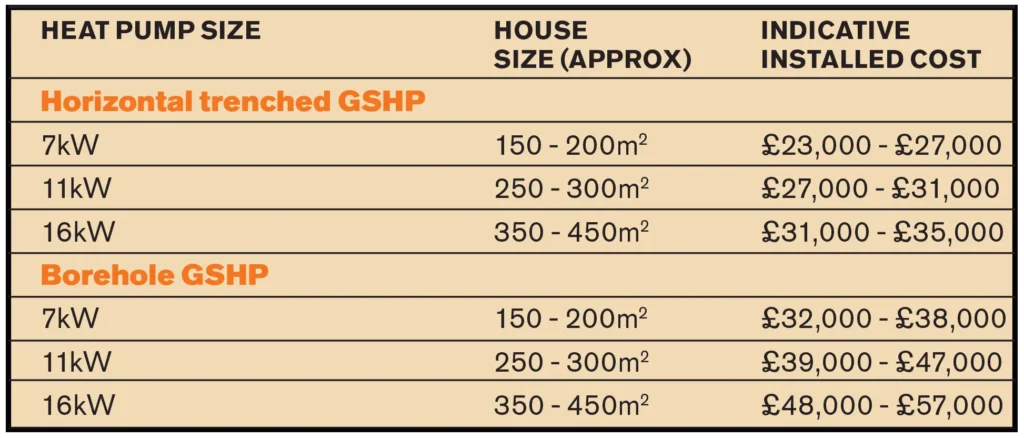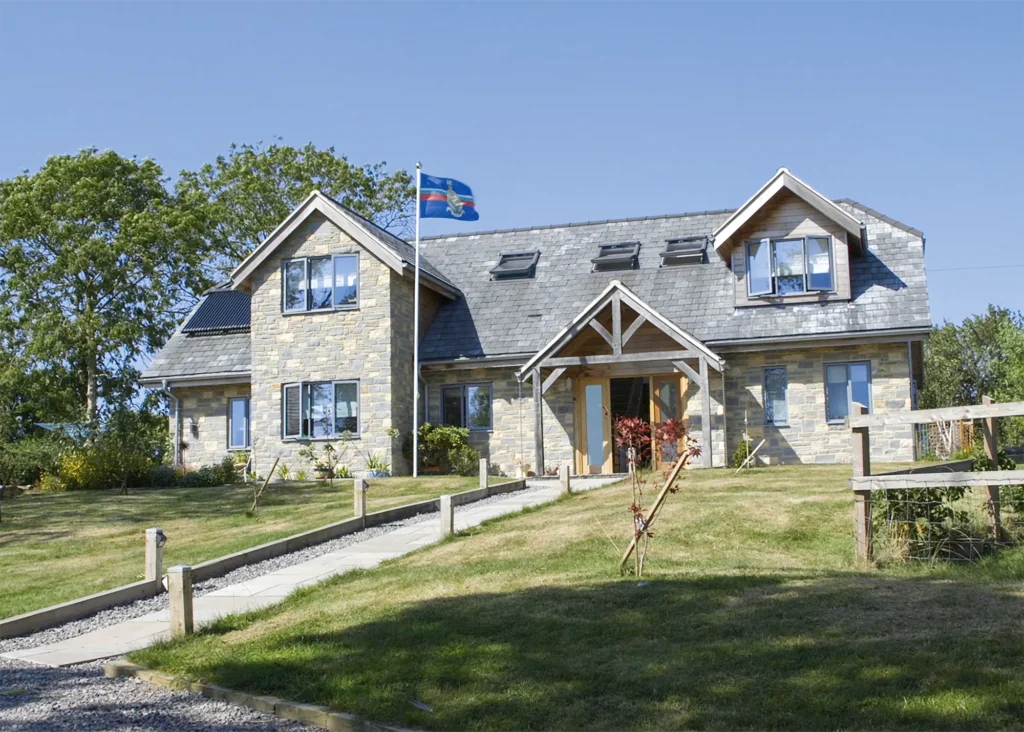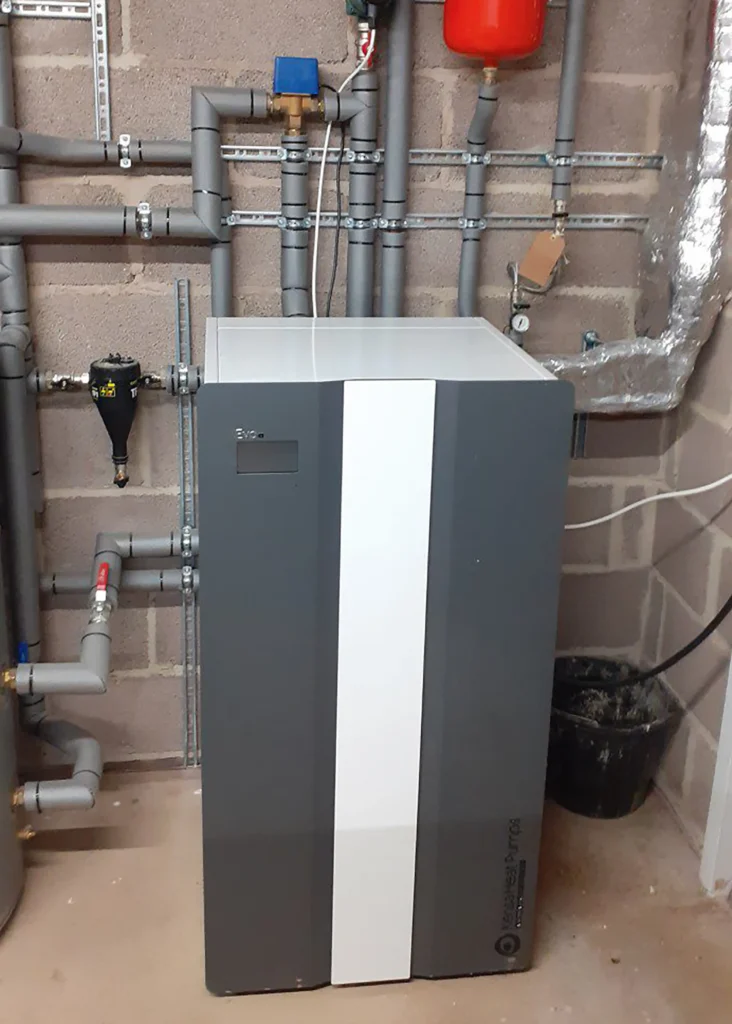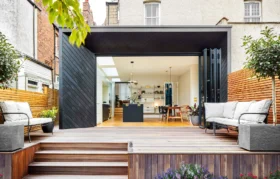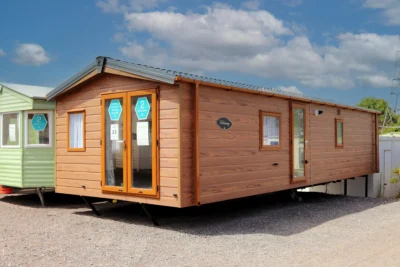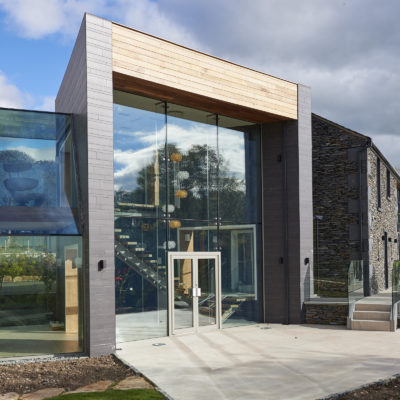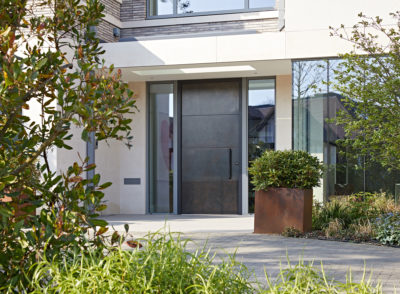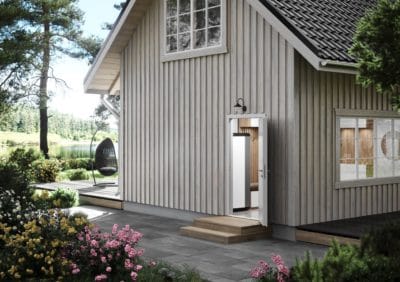Ground Source Heat Pumps: Is a GSHP Right For My Home?
Ground source heat pumps (GSHPs) are low-carbon heating systems suitable for a wide range of UK properties. But how can you tell if a ground source heat pump is the right solution for your home, lifestyle and household heating demand?
GSHPs are designed to provide efficient space heating and hot water. They take their warmth from collector arrays buried – you guessed it – in the ground. Temperatures about 1.5m down into the soil are very stable, which means this technoloy can be very efficient and predictable.
This energy is then transerred into the heat pump appliance, usually located in a utility or plant room, where it’s concentrated via a compressor to raise the temperature. The process uses fewer units of power than it produces as useful heat, which is what makes ground source heat pumps such an efficient, carbon-reducing option.
This technical guide to GSHP design and installation sets out the essential information to ensure you’re making the best decision. Before you begin, you might want to read our ultimate beginner’s guide to ground source heat pumps.
Where Should I Start with a Ground Source Heat Pump?
When assessing whether a GSHP is right for you, start by questioning how a ground source heat pump’s running costs would compare to a traditional heating system and whether the installation will be worth it.
If you want a heat pump, it’ll pay to involve your system designer early in the planning phase and get them talking to your architect. Together, they’ll look at your project as a whole and assess whether or not a heat pump will be a good fit, based on a whole range of factors.
“We always start from the building and work backwards,” says Andy Howley, CEO at Hex Energy. “We calculate the building energy loads based on factors such as its fabric and construction – including what insulation is in the walls.”
This data will establish two key parameters: peak heating load (the amount of energy needed to achieve a minimum internal temperature on the coldest days of the year) and your household’s annual heat demand. “The peak load determines the capacity of the heat pump,” says Andy. “If that’s 11kW, for instance, then we might specify a 12kW appliance.” Annual heat demand, meanwhile, will drive the design of the ground collector array.
Learn More: Heat Pump Guide: What are Heat Pumps & How do they Work?
BENCHMARK GUIDEWhat Does it Cost to Install a Ground Source Heat Pump?There are many variables when designing a ground source heat pump – location, heat pump type, house performance, whether insulation and emitters are being upgraded, the type of collector and how you plan to commission the groundworks, to name but a few. So, pinning down a typical job and typical price is challenging. Nevertheless, the team at Hex Energy has kindly prepared the following indicative budget ranges for Build It’s readers. These figures are based on a full design and install service, including the collector loop, heat pump, domestic hot water tank, commissioning and certification of the system, in a house constructed to current Building Regs standards: Note that GSHP installations are currently eligible for a £6,000 grant under the Boiler Upgrade Scheme (which is accessible to both home renovators and self builders). So, final indicative prices would be the above figures less the £6,000 government grant. This table features benchmark costs, updated in September 2023. |
Is my House Type Suitable for a Ground Source Heat Pump?
If you’re creating a new house from scratch, you’ll have the power to specify the exact building energy performance you want and specify a system accordingly to meet your needs.
A Passivhaus-standard home, for instance, is likely to have both a low peak load and a low annual heat demand.
You might, however, be undertaking a modern build that generally performs very well, yet has some quirks that impact on the best specification for your project. “Say your proposed home or extension features one wall that’s fully glazed,” says Andy. “Glass performs about three times worse than a solid wall, so we might recommend upgrading to triple glazing.”
While this will involve greater cost upfront, you’ll get better performance and lower energy bills in the long-run as heat will be retained more effectively inside your building – regardless of the heating system you go for.
What about existing homes – can a ground source heat pump work in a house renovation project? “It’s a myth that you can’t have a heat pump in an old house,” says Stuart Bader, sales manager at UK GSHP manufacturer Kensa. “We can often significantly reduce carbon emissions, and maybe save some money on bills, too.”
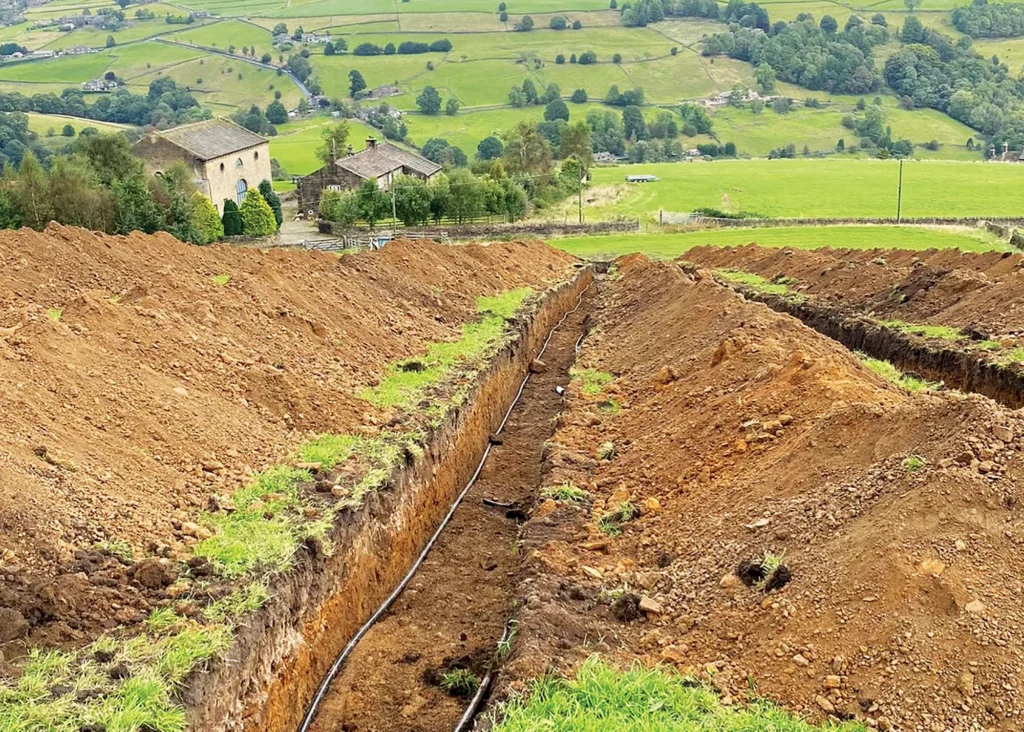
A straight pipe collector loop system being laid in trenches as part of an installation by Green Building Renewables
Look at this way: yes, in an old house, a heat pump will use more power and cost more to run than in a highly-insulated new build. But the same would be true for a boiler. So, it’s all about going back to that first stage, to understand the nature of the building – and any improvements you plan to make to the fabric and emitters – before proceeding.
Emitter type for your ground source heat pump is a consideration, too. Well-designed underfloor heating (UFH) operates at the perfect flow temperature to optimise a heat pump’s efficiency. Underfloor heating is straightforward to integrate at the design stage of a new home, as you can easily accommodate the required floor build-ups.
That’s a little trickier in a renovation scenario, where you may need to insulate beneath floors and adjust door thresholds etc – although there are plenty of retrofit systems designed to minimise these issues.
If underfloor heating isn’t an option for you or your existing house, switching to oversized radiators will help to increase surface area and bring the flow temperature closer to optimal for a comfortable indoor temperature.
Read More: Underfloor Heating Beginner’s Guide: How to Get Started with UFH
CASE STUDYSomerset Self Build with Ground Source Heat PumpWhen Peter and Kay Babbington decided to build their own home, they picked a plot about 200 yards away from their eldest daughter’s house. “We have seen many things we’ve liked both at home and abroad in houses, and decided the time had come to put it altogether in one new home,” says Peter. The couple were keen to install low-carbon heating, and quickly decided that a ground source heat pump would fit the bill perfectly. “My brother-in-law has an air source heat pump, and it makes a lot of noise, so we wanted something quieter and more efficient,” explains Kay. The Babbingtons first met Kensa at a self build show, before visiting the company’s Exeter office to get more information and specific advice for their project and ground source heat pump installation. A 9kW Kensa Evo GSHP was specified to provide space heating and hot water, alongside a solar thermal array. Long-term Kensa partner Total Renewable Solutions was appointed as the installer. The plot had plenty of room for slinky collector trenches, which were straightforward to install during the construction phase of the Babbingtons’ self build – albeit the winter timeline made for harder ground. The heat pump and hot separate water cylinder are housed in a plant room, which is located in the property’s basement. The setup powers underfloor heating on the ground floor, and radiators upstairs. “Our running costs are much lower than other systems we’ve had in the past,” says Kay. Learn More: 12 Ways to Save on Home Energy Bills |
Ground Source Heat Pump Collector Array Design & Sizing
Good collector design is essential to achieving the performance you expect from your ground source heat pump. There are two main options here for a ground source heat pump installation: trenches and boreholes. “The golden rule is to install the most cost-effective option for the ground you’ve got,” says Andy. “If you have a paddock with easy ground, for instance, then it will be trenching all day.”
The collectors themselves might be straight pipes or slinkies, depending on the design, and they can be configured differently to suit the conditions – slinkies could be tipped sideways, for instance, or double or triple stacked. A key goal is to minimise the pressure drop through the system – which comes down to the pipe length, diameter and flow rates – as this means the circulation pump can be kept small.
The larger the circulation pump, the more power it will consume. “A 5kW ground source heat pump with a 5W pump would have lower running costs than a 5kW GSHP with a 500W pump, as the latter is using parasitic pumping power for no additional benefit,” explains Andy.
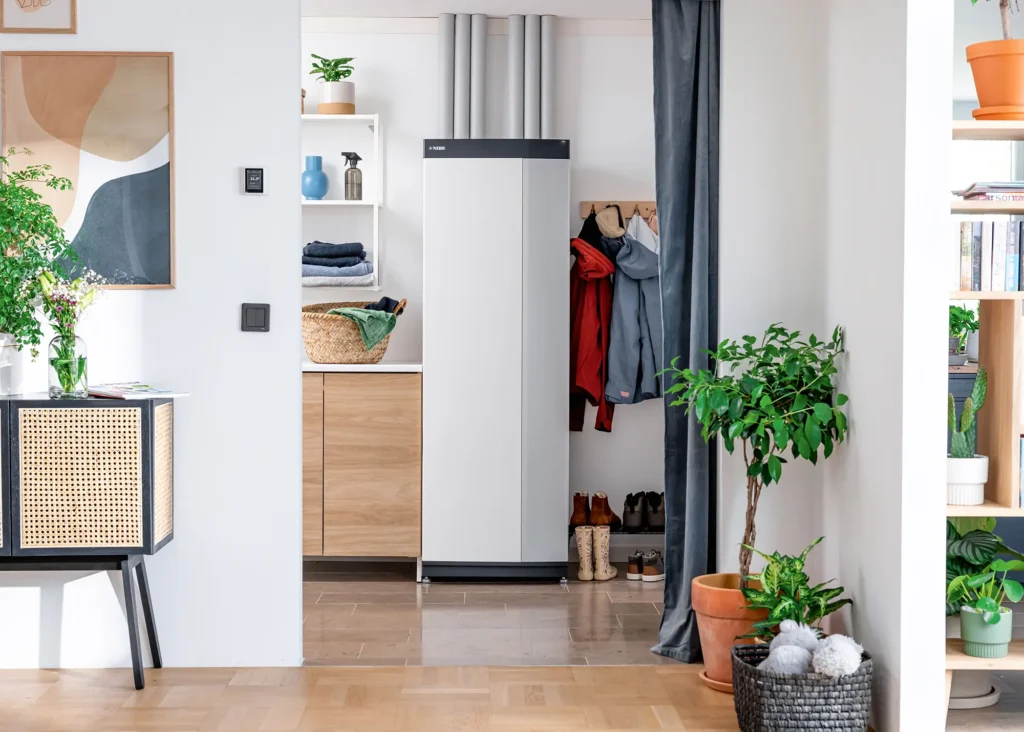
Available in four output sizes, the NIBE S1155 is an intelligent inverter-driven ground source heat pump designed to be combined with the company’s smart home accessories to create an efficient, easy-to-control living environment
Kensa prefers slinkies over straight pipes. “They both require the same amount of area to extract the right amount of energy out of the ground, but slinkies make for a slightly simpler installation,” says Stuart.
“We use a 1.2m x 1.2m trench for the coils, and we offer three collector sizes at either 30m, 40m or 50m. Digging, say, five 1.2m trenches at 5m centres between them gives you space to relocate the spoil, which is a lot easier than digging multiple narrower trenches at a narrower spacing.”
Adequate spacing between each collector loop is critical to avoid over-extracting the energy and allow the ground to ‘recharge’ with heat from the sun. Your heating engineer will factor this into the system at the design stage.
Boreholes are a more expensive solution than trenched arrays, but may be the right (or only) option on smaller sites or where you have an established garden that would be expensive and time-consuming to reinstate. “The amount of space you have outside will be a key factor in determining the best collector type – do you have 10 acres or 20m?” says Stuart. But the suitability of a ground source heat pump for your property isn’t just about the size of your garden.
“If you only need a single borehole, it may not matter that you only have a small outdoor space,” explains Stuart. There can be other options, too: some homeowners don’t realise they have a small leat, river or lake nearby that could be the ideal site for a water-source array.
CLOSER LOOKHow Does a Ground Source Heat Pump Produce Hot Water?A ground source heat pump has to work a little harder to generate hot water, so it’s not quite as efficient at this as space heating. In most households, however, domestic hot water (DHW) for taps, showers etc represents a relatively small amount of the annual energy demand – with the possible exception of ultra-efficient eco houses, such as a Passivhauses. There are two main ways of dealing with DHW in a ground source heat pump installation. One is to output and store it at around 45°C, which actually marries up well with modern anti-scalding standards. The other is to opt for a high-temperature heat pump, such as Kensa’s Evo and Shoebox products, which can output to the cylinder at 63°C. Either way, the GSHP should be able to take care of everything, meaning you won’t usually need a secondary heating system – although a manual immersion is usually installed as a failsafe. A legionella purge will need to be scheduled on a timer (once per week is fairly standard). |
Understanding a Ground Source Heat Pump’s Performance
A ground source heat pump’s efficiency is measured as its coefficient of performance (COP), which is a ratio of output versus input. For instance, if you get 4kW of heat for every 1kW of electricity used to power the pump, that’s a COP of 4 (or 400% efficiency).
Good engineers and installers will design your system based on worst-case scenarios, quoting the GSHP’s anticipated seasonal performance – ie how efficient it will be across a full year.
Because the ground is at a relatively stable temperature, a well-conceived and properly installed ground source heat pump system will deliver predictable results in use.
If your heat pump does indeed run at an efficiency of around 400%, you can expect significant carbon savings from a GSHP (especially if you’re on a renewable tariff). You can also expect very similar running costs to using a mains gas boiler (given electricity currently costs four times the price of gas, under the price cap).
Looking for heating products for your self build or renovation? Browse Build It’s Product Directory
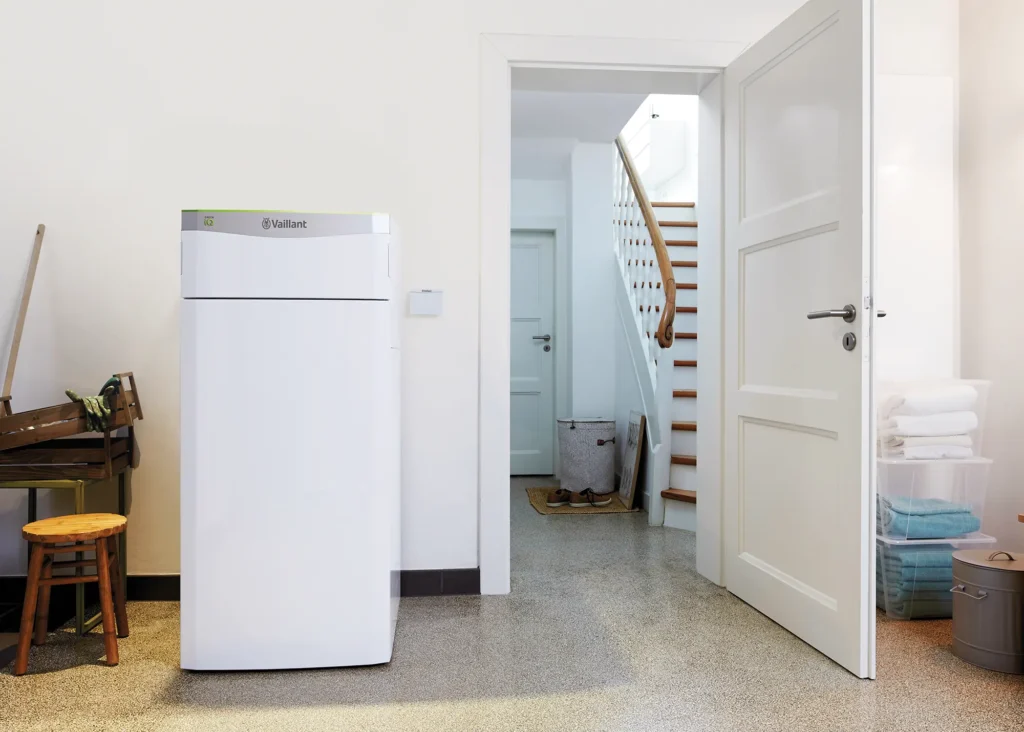
Vailliant’s flexoTHERM multi-source heat pumps are Quiet Mark certified, with noise levels no greater than a domestic fridge. They can be installed as a ground, air or water source appliance
Why isn’t my Ground Source Heat Pump Performing as Expected?
“Issues with poor performance are usually down to poor design,” says Andy. “You can generally expect your ground source heat pump to operate in the same ballpark as the manufacturer’s quoted COPs; perhaps plus or minus 5% to 10%. So, if we’re predicting a seasonal COP (sCOP) of 4.2, we’d expect some years you might get 3.8, and some better.”
Among the issues that might affect that performance of your ground source heat pump are too much parasitic pumping power, incorrect flow rates or simply not designing the emitter system properly in the first place. If a homeowner finds they have to turn the flow temperature up to 50°C, for instance, this will instantly impact on the GSHP’s performance.
Ultimately, living with a heat pump is different to running your house off a boiler, so it’s important to talk this through with your installer from the early design stages.
“A ground source heat pump will produce energy 24/7, but at a lower temperature than a traditional heating system,” says Stuart. “So, you can’t treat it like the old on/off setup you might be used to.” Good commissioning, appropriate controls and proper handover are therefore critical.
More heat pump advice: Can Heat Pumps be Quiet? Reducing Heat Pump Noise at Home
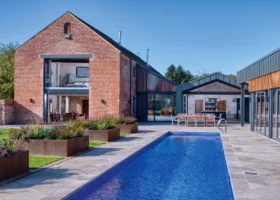






























































































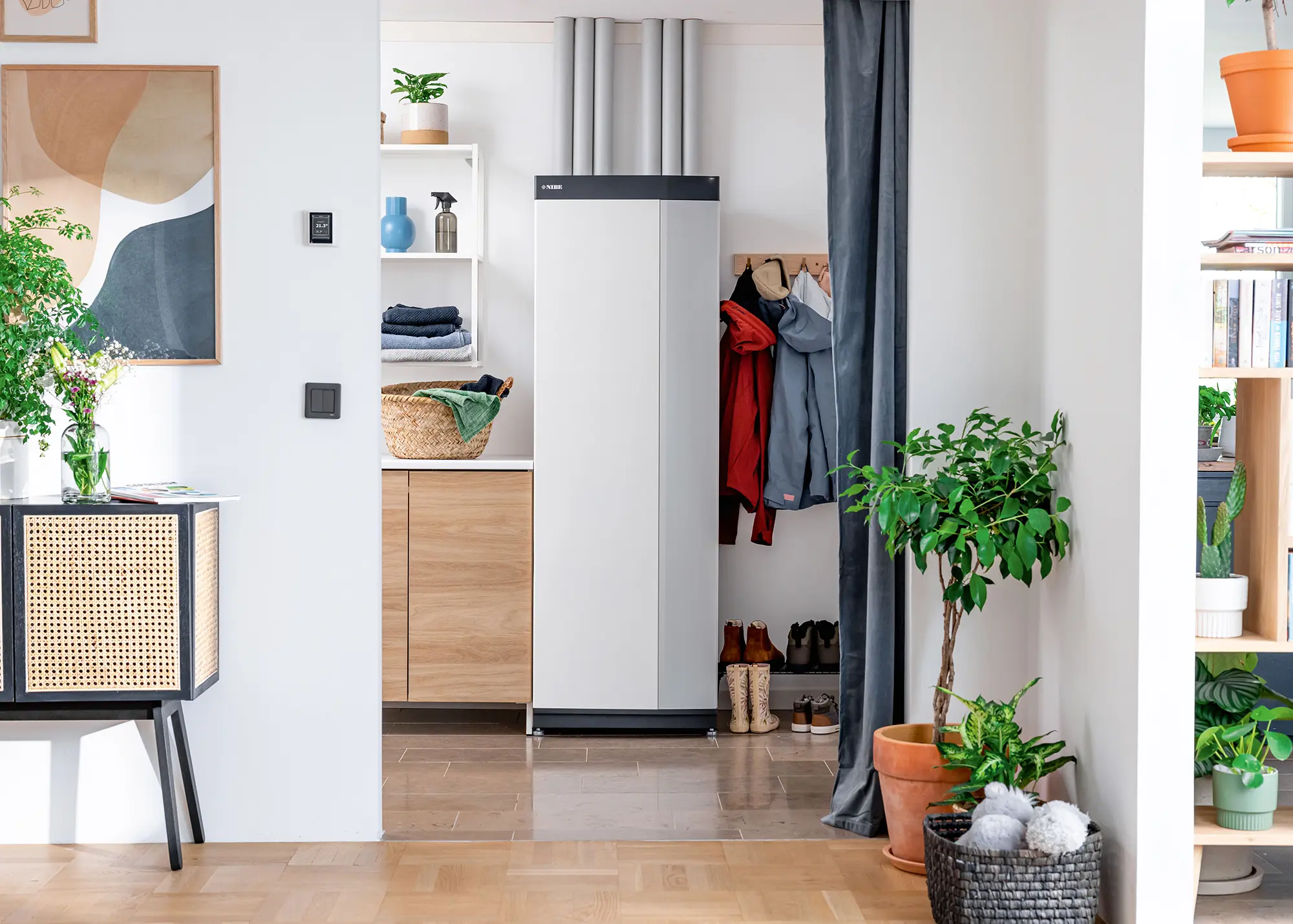
 Login/register to save Article for later
Login/register to save Article for later

